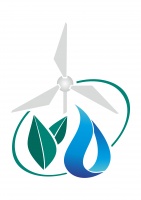Comparison of practices
| Название практики | Increasing water availability of desert pastures | Arrangement of springs to improve stock watering |
|---|---|---|
| Category | Water resources | Water resources |
| Tool | System for enhancing water availability | Public participation principle |
| Field of application |
|
Use of water resources |
| Usability of practice for adaptation to climate change | High | Moderate |
| Implemented by | Ministry of Nature Protection of Turkmenistan and German Technical Cooperation Agency (GIZ) |
CAMP-Alatoo Public Foundation (PF) |
| Used by |
Country: Turkmenistan Province: Ahal Region Other settlement: Yerbent |
Country: Kyrgyzstan Province: Chuy Region District: Sokuluk District |
| Local specifics | The site (nearly 842,000 hectares; population of 8,000 people) is located in the Central Kara Kum Desert. The relief is represented by the combination of “barkhans” (sand dunes) of various forms and “takyr” (dry-type playa) depressions. The majority of the area is covered by desert pastures. |
The site is located in a semi-drought zone subject to acute shortage of water resources in summer period and land degradation |
| Practice usage period |
Start date: 01.01.2009 End date: 31.12.2010 |
Start date: 01.01.2011 End date: 31.12.2011 |
| Problem solved through this practice | As soon as people began to lead a settled life, they shifted away from the traditional way of livestock grazing. The land became subject to strenuous exploitation, especially near settlements and watering sites. Saxaul thickets were cut down for heating and cooking purposes. The thickets were unable to restore over time due to overgrazing. Frequent movement of sand dunes and severe sandstorms threaten not only dwellings and social infrastructure, but also degrade soil and destroy the limited number of available water wells. Degraded pastures fail to yield enough livestock forage. The shortage of watering sites leads to consolidation of large numbers of animals around existing wells. Structural changes in livestock production (more goats and cattle instead of camels; more unprotected pastures around settlements instead of distant pastures) lead to vegetation cover degradation, in particular, around settlements and watering sites. |
Extremely low water availability (supply) of pastures; the quantity of cattle in watering sites below standard; land erosion |
| Tools used in the practice | Technology for combatting desertification and droughts by proper management of wells and watering sites (construction and repair of wells, building mechanical protection from reed mats and Saxaul saplings) |
Technology of springs arrangement for stock watering |
| Description of the practice and its results | Actions: 8 new wells built and 6 existing wells repaired, and mechanical protection (reed mats and Saxaul saplings) set up on the territory of 27 hectares. Water wells also underwent small-scale repair and construction to expand the area of pasturable land and prevent localized degradation. Results: After the restoration of wells, desert pastures became subject to even and rational use; installation of mechanical protection allowed to stop the approaching sand dunes around settlements. |
Actions: At first, the exact location of water outcrop was identified and cleaned from mud. 15 meters below the outcrop, 3 interconnected water tubs were installed (each 1.8 m long, 0.5 m wide and 0.5 deep). Each subsequent tub is located lower than the preceding one, thus, allowing water flowing down in the cascade manner. Results: Financial and economic: Cattle gaining weight quicker. Technical: Improved water supply in the area, including for cattle watering. |
| Lessons learnt and recommendations made | Lessons learnt: The capacity of watering sites was increased by way of improving the existing infrastructure and, where possible, building new wells infrastructure. The newly drilled wells significantly aid local population in maintaining their livestock and households. Recommendations: It is necessary to test traditional drought-resistant grain crops. |
Lessons learnt: Collection of water in one place had been practiced since ancient times, but was forgotten over time. Rehabilitation of traditional practices should be welcomed. Recommendations: Similar practices should be scaled-up and continued as they not only benefit the local population, but also allow enhancing water availability for wild animals and expanding hayfield meadows. |
| Source of practice |
|
Traditional tools transferred from generation to generation which demonstrate their relevance in modern conditions |
| Readiness for implementation |
1. Cost of implementation: High 2. Approximate cost of investment per 1 ha: 3. O&M costs: High 4. Expert support: Not needed |
1. Cost of implementation: High 2. Approximate cost of investment per 1 ha: 3. O&M costs: High 4. Expert support: Not needed |
| Brief information on the project | Project title: Local-level capacity building and investment for sustainable management of land resources. Project duration: 2009-2010. Project goal and objectives: combating desertification and droughts. Project beneficiaries: farmers and representatives of local executive bodies in several settlements. Project implementer: Ministry of Nature Protection of Turkmenistan and German Technical Cooperation Agency (GIZ). |
|
| Funding source | UNDP and Global Environmental Facility | PF “CAMP-Alatoo”, local population |
| Information sources | WOCAT.net, Mr. Abdybek Asanaliyev (e-mail: asanaly61@mail.ru), Kyrgyz National Agriculture University, Bishkek |
|
| Contacts of a person, who filled this form | SIC ICWC |
SIC ICWC |
| Form submission date | 17.04.2018 | 30.03.2018 |




